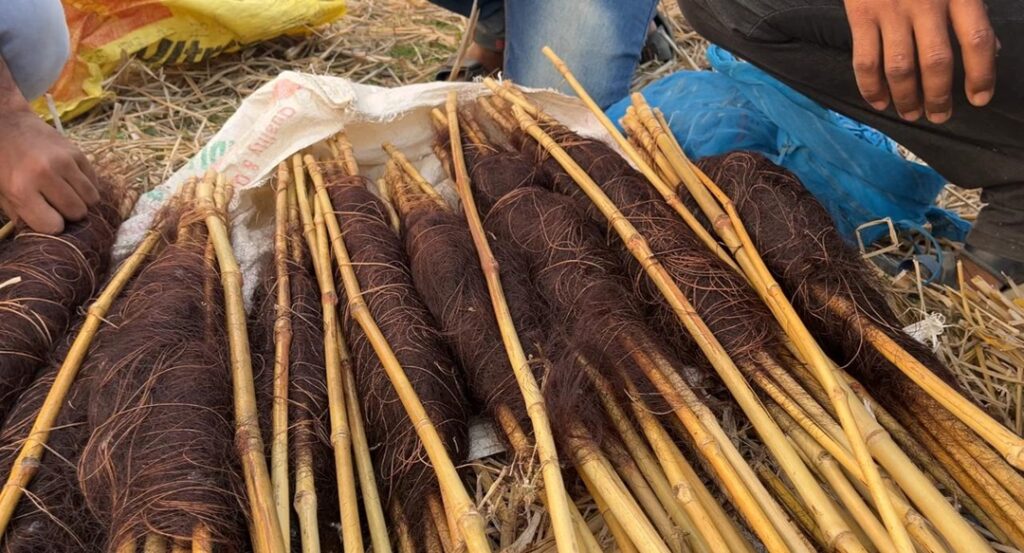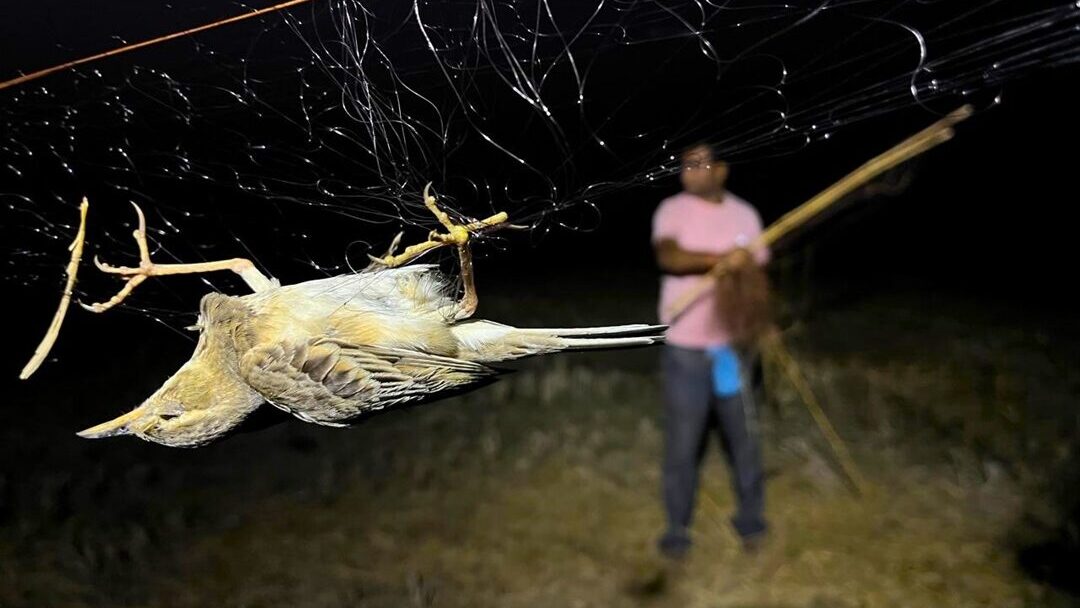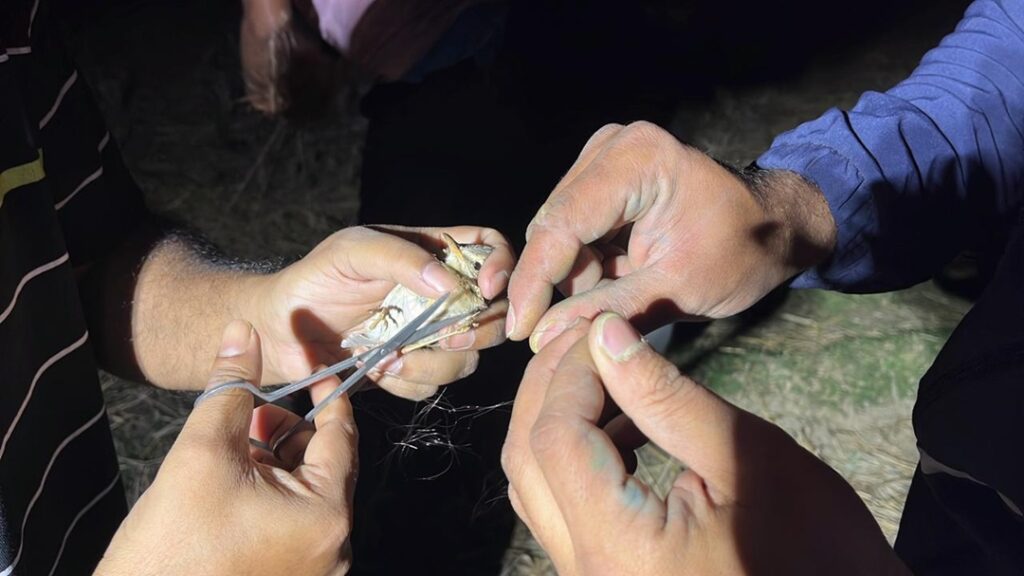HEAL’s Intervention Saves Thousands of Migratory Larks from Falling Prey to Bird Poachers
18 February 2024
In the last two days, our team successfully dismantled lark trapping mist nets, collectively measuring almost 7 km in length, from locations in Murshidabad and Birbhum districts. These nets were set up by commercial poachers to trap various species of migratory larks (primarily Short-toed Larks) which are locally known as ‘Bogari,’ and widely consumed as a delicacy in multiple districts of central West Bengal.
As the migratory season concludes, Bogari gather in large numbers in the vast open fallow lands just before embarking on their return migration journey to their trans-Himalayan breeding grounds. Our team closely monitored these fallow lands following reports from local villagers about potential poaching activity.
On February 18, our team discovered a spectacular ‘murmuration’ of well over 15,000 larks at a fallow land in Khargram, Murshidabad! Not far from it, a group of poachers was setting traps to hunt them en masse, and our drone captured them in the act. While the poachers managed to flee before being apprehended, our team and the local police seized a bike belonging to one of their members.
The following day, our drone spotted another gang of poachers laying traps for Bogari, this time in Birbhum. The gang fled the scene, leaving behind all their nets and traps, which were confiscated by the Forest Department.

Currently, not much conservation efforts are in place for migratory larks, but the number of organized bird poaching gangs observed by our team in just two days highlights the significant scale at which these birds are hunted in central West Bengal. Without proactive intervention, such intense hunting could have a devastating impact on their populations in the long run.




